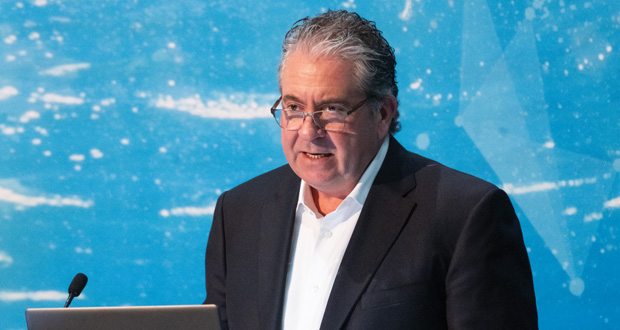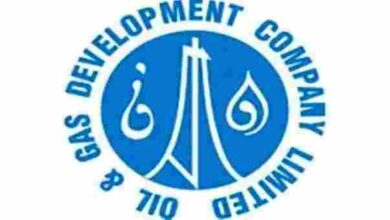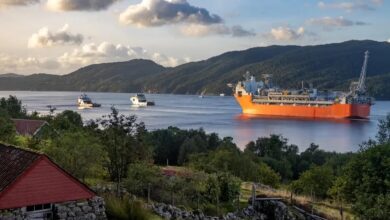Proven 20K technologies set to help BP advance long-held opportunities in the Paleogene
Company tapping into industry-led solutions to overcome pressure, formation challenges

By Jessica Whiteside, Contributor
BP’s patience in the Paleogene formation in the ultra-deepwater Gulf of Mexico is paying off as the 20,000-psi technology needed to develop the high-pressure, high-temperature play catches up to the potential of the resource.
The company made its first discovery in the Paleogene, Kaskida, in 2006, and has been waiting ever since “for the right time to develop it safely and responsibly,” said Andy Krieger, BP’s Senior Vice President, Gulf of Mexico and Canada, at the 2024 OTC in Houston in May.
Industry breakthroughs that have made 20,000-psi technologies commercially available across the spectrum of drilling, completions, facilities and topsides mean the right time is now: On 1 August, BP took a final investment decision (FID) on Kaskida, and FID on another Paleogene prospect, Tiber, could come in 2025. A green light for Kaskida makes it the fourth 20,000-psi development to be sanctioned by the industry in the ultra-deepwater Gulf of Mexico, following Chevron’s Anchor, Beacon Offshore Energy’s Shenandoah and Shell’s Sparta.
BP continues to deepen its leasehold position in and around the Paleogene and sees a “tremendous amount of running room” in the formation, potentially for decades to come, Mr Krieger said. “With Kaskida – and then hopefully Tiber to follow – we’re only getting started.”
Industry-led solutions
BP’s approach to ensuring its technical readiness for Paleogene development has been to “leverage industry-developed solutions where they’re available,” rather than pursuing its “own unique and bespoke” equipment like it did in the early 2000s to build the 15,000-psi capabilities needed to develop its Thunder Horse field, Mr Krieger said.
“We’ve taken a somewhat more patient posture as it’s related to the Paleogene, and those solutions have come through, developed by our drilling contractors, developed by our service providers, and now successfully employed by other operators that have gone before us,” Mr Krieger said. He described the industry’s progression to a 20,000-psi world – through such advancements as high-pressure subsea tree systems, 20,000-psi blowout preventers and increased hoisting capacity on drilling rigs – as “a demonstration of the innovation and the drive that our industry has.”
Advancements in downhole completions, such as multistage fracking, have “fundamentally transformed the Paleogene” by improving access to extensive reservoirs that may, in some cases, have high-quality oil but lower-quality rock, Mr Krieger said. He noted that Kaskida has one of the thickest gross height intervals across the Paleogene and will require a multizone fracking tool that’s been used hundreds of times within the Gulf of Mexico.
“It’s certainly not been the completion type that has underpinned the Gulf of Mexico production for the last two to three decades, but it has been successfully deployed many, many, many times,” he said.
Infrastructure-led exploration
BP now has over 9 billion barrels of discovered resource in place in the Paleogene across five discoveries, with the potential to deliver 150,000 barrels per day, Mr Krieger said. This makes the formation a key driver for the company’s plans to increase its Gulf of Mexico production to 400,000 barrels of oil equivalent per day by the end of the decade.
While the biggest upturns in production will come through bringing new major projects online, the company is also pursuing opportunities to maximize value from its five existing Gulf of Mexico hubs.
This will include incremental production gains through infrastructure-led exploration, in which infill drilling is done near existing hubs to allow tieback wells to be drilled, completed and brought online quickly. Mr Krieger pointed to BP’s plans for a new two-well tieback expansion at its Atlantis project and the southwest extension of its Argos project as examples of this approach. Centering exploration activities around existing hubs allows the company to “lengthen the strike, leverage the capital investment that we’ve made and extend the life of those assets,” he said.
Continuous improvement
Other strategies BP uses to maximize value from its Gulf of Mexico hubs include boosting drilling capacity through horizontal wells, or even multilateral technology, maximizing recovery through different completion designs like open-hole gravel packs or potentially standalone screens, and pursuing wellwork efficiencies, Mr Krieger said.
“Through deep collaboration with our suppliers, the progress we’ve made in our light well intervention capability has just been transformational. We’ve delivered and achieved regularly a 50% reduction in intervention costs to enhance these wells and in some instances repair, all the while also reducing our environmental footprint.”
Given the remoteness of many offshore facilities, power management features prominently in BP’s efforts to address the environmental impact of its Gulf of Mexico operations. Mr Krieger noted the importance of working closely with drilling contractors to address power diesel consumption and power generation through, for example, the use of closed bus solutions or battery packages. Although the Gulf of Mexico already has a low carbon intensity relative to some other basins globally, there is still potential for a lot of small and continuous improvement projects, he said. DC




